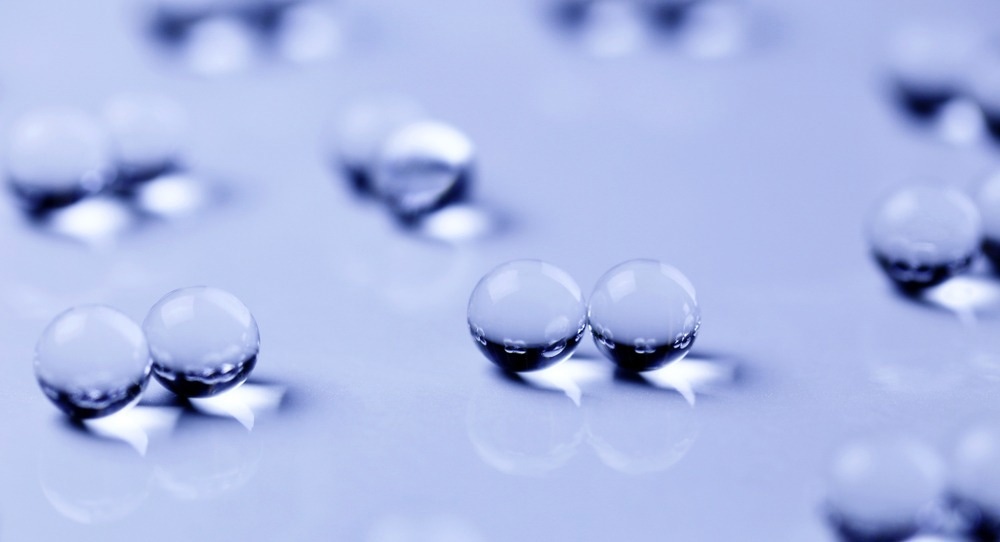A recent study published in Advanced Functional Materials explored a novel approach to enhancing oxygen evolution reaction (OER) electrocatalysts for water electrolysis. It focused on cobalt-iron layered double hydroxides (CoFe-LDH) supported on vacancy-engineered vanadium carbide (V2CTx) MXenes to improve performance in anion exchange membrane (AEM) electrolyzers. The goal was to address the critical need for efficient and cost-effective catalysts in OER, a key step in sustainable hydrogen production through electrolysis.

Image Credit: Kelly Marken/Shutterstock.com
MXenes and Their Role in Water Electrolysis
Water splitting is a fundamental process in green energy, mainly for sustainable hydrogen production through electrolysis. A key step in this process is the OER, which is often limited due to slow kinetics and high activation energy, making it the most energy-intensive stage.
To overcome these challenges, the development of efficient, low-cost, and stable electrocatalysts is essential. In this context, CoFe-LDHs have emerged as promising OER catalysts due to their earth abundance, cost-effectiveness, and strong catalytic activity in alkaline media. However, their poor electronic conductivity hinders overall performance.
To address this, researchers have turned to advanced support materials like MXenes, two-dimensional (2D) transition metal carbides, and nitrides known for their high conductivity, structural tunability, and excellent electrochemical properties. Among them, V2CTx MXenes have emerged as a promising option for their superior electron mobility.
Investigating New MXene-Supported CoFe Catalysts
Researchers synthesized and analyzed Co0.66Fe0.34-LDH composites using two types of MXenes: pristine V2CTx and vacancy-engineered V1.8CTx, containing 10% vanadium vacancies. They prepared composites with varying MXene content (17%, 33%, 50%, and 75% by weight) to understand how support type and vacancies affect catalyst behavior.
The synthesis process involved selective etching with hydrofluoric acid, delamination to separate MXene layers into thin sheets, and a urea-assisted heat treatment to anchor CoFe-LDH nanoparticles onto the MXene surfaces. Reference materials such as pure CoFe and carbon black composites were also prepared and assessed using various characterization techniques, confirming successful LDH phase formation on the MXene supports.
The catalysts’ performance was evaluated in alkaline solutions using electrochemical tests. In situ synchrotron X-ray absorption spectroscopy (XAS) was employed to observe changes in the oxidation states of cobalt, iron, and vanadium.
Enhanced Catalytic Performance and Mechanisms
The CoFe-LDH@MXene composites demonstrated significantly better OER performance than pure CoFe and other reference materials. In particular, the composites supported on vacancy-engineered V1.8CTx MXenes (the CFVv series) outperformed those with pristine V2CTx supports (the CFV series). Among these, CFVv75 achieved a low overpotential of 304 mV at 10 mA cm-2, surprisingly surpassing all other tested catalysts.
X-ray diffraction and electron microscopy indicated that the MXene supports influenced the crystal structure and morphology of the CoFe-LDH particles. The vacancy-engineered V1.8CTx led to smaller, nanocrystalline LDH particles with amorphous features, which usually correlate with higher catalytic activity due to increased surface area.
Electrochemical impedance spectroscopy showed improved charge transfer in the composites, although some complex interactions at the interface suggested the MXene composition and vacancies influenced this behavior. Similarly, Tafel slope analysis indicated that the rate-determining step in the OER shifted to later stages (such as forming OOH* or O2) in the composite, demonstrating enhanced reaction mechanisms.
In situ, X-ray absorption spectroscopy found that cobalt oxidized beyond Co3+ to Co4+, while vanadium was irreversibly oxidized from V4+ to V5+. These combined effects helped stabilize the active sites and improve electron transfer, boosting overall catalytic performance.
Despite some vanadium loss during prolonged use, the composites maintained stability with minimal degradation after 12 hours of testing at 100 mA cm-2. Tests in real electrolyzer devices confirmed these benefits, with CFVv75 reaching current densities near 450 mA cm-2 at 2.0 V, operating at voltages approximately 100 mV lower than pure CoFe catalysts.
Applications for Sustainable Hydrogen Production and Electrocatalyst Design
The improvements in OER activity and stability highlight the potential of these materials as efficient and affordable anode catalysts for alkaline water electrolyzers. By combining low-cost, abundant metals with advanced 2D MXene supports, the study addresses issues such as poor conductivity and limited active site exposure.
The ability to adjust vacancies in MXenes provides a flexible method for fine-tuning the interaction between the catalyst and its support, allowing for better control over their electronic properties. These materials also performed well in membrane electrode assemblies under real-world conditions, supporting their potential for large-scale green hydrogen production and paving the way for applications in other clean energy technologies.
Advancing Electrocatalysis
The study demonstrates that vacancy engineering in MXenes significantly enhances the OER performance of CoFe-LDH composites by improving catalytic activity, charge transfer, and operational stability. These advancements offer a novel approach to developing efficient, low-cost, and scalable anode materials for clean hydrogen production.
Future work should improve the long-term durability of MXene-based composites under real-world conditions, further tune vacancy structures to maximize catalytic efficiency, and expand the application of engineered MXenes to other electrochemical processes beyond OER. Overall, the findings provide valuable design principles for creating next-generation electrocatalysts and mark a significant step toward advancing clean energy technologies.
Disclaimer: The views expressed here are those of the author expressed in their private capacity and do not necessarily represent the views of AZoM.com Limited T/A AZoNetwork the owner and operator of this website. This disclaimer forms part of the Terms and conditions of use of this website.
Source:
Kaplan, C. et al. Enhancing CoFe Catalysts with V2CTX MXene-Derived Materials for Anion Exchange Membrane Electrolyzers. Advanced Functional Materials (2025). DOI: 10.1002/adfm.202503842, https://advanced.onlinelibrary.wiley.com/doi/10.1002/adfm.202503842